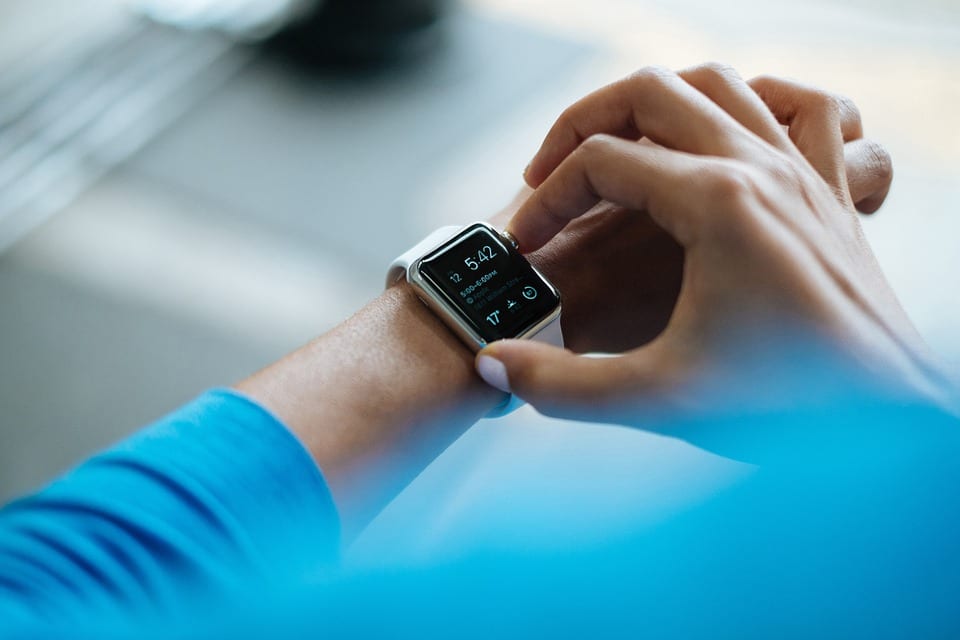Wearables in the Workplace
By: Ciopages Staff Writer
Updated on: Feb 25, 2023

Wearables in the Workplace are here to stay and grow. From Apple watches to FitBit health monitors, wearable technology has permeated every part of our lives. If your workers opt to use wearable devices at work, you need to be aware of the potential benefits and the possible drawbacks to your business. Workers who use wearable technology have more access to files on the go and can even be located in a hurry if needed; the improved mobility can also boost your team’s efficiency and productivity. Wearable tech does have some drawbacks; critics cite the lack of privacy and concerns about data collection as reasons to avoid or strictly regulate the use of wearable technology at work.
Benefits of Wearables in the Workplace
Curb Healthcare Costs
Wearable technology frees up your employees and ensures that they don’t have to be tied to a desk or clunky computer screen.
Fitness related wearables can help encourage employees to opt for healthier choices and reduce overall healthcare costs, according to a recent piece in Fortune magazine. By actively promoting healthier lifestyles and choices at work, companies can help improve their employees’ overall wellness; some businesses opt to provide wearable activity and fitness monitors, while others allow employees to bring their own devices to work. Workers who actively maintain healthy lifestyles can help your business get better insurance rates, making wellness a priority for many businesses.
Improved Mobility and Flexibility
Wearable tech allows employees to stay connected no matter where they are; an employee can visit the ware house, the boardroom and the cafeteria and be able answer questions and respond to requests in real time. Wearable technology frees up your employees and ensures that they don’t have to be tied to a desk or clunky computer screen. The ability to check in, respond to emails and even access key data from anywhere in your facility can help boost employee productivity and efficiency and make it easier for your team to work together.
| Did you know? |
|---|
| For the year 2015, worldwide wearable shipments amounted to 78.1 million devices, up 171.6 percent from 2014. |
Improved Location Monitoring
It doesn’t apply to every organization, but the ability to determine where employees are at any given time can help enhance security and ensure safety. The ability to track the location of a given employee could help in a military, security or industrial setting; wearables also make it easy to get a location on every team member in the event of an emergency.
Potential Drawbacks for Wearables in the Workplace
Privacy Concerns: When employees wear work sanctioned or provided devices, there needs to be a clearly outlined system in place that states what data if any is being collected. Employees need to know if data is being collected, who can access that data and how that information could be used. If your business is collecting data for analysis purposes, then stripping identifying information from the data collected could ease privacy concerns. Any time you are collecting or have access to employee data, there could be issues with privacy and security.
Keeping wearable tech programs optional can help mitigate risk and ensure that people only participate if they want to. Any data collection should be done in a transparent way, ideally via a third party to reduce your risk.
Potential Legal Issues: If the data collected via wearable tech is used to determine pay raises, award responsibilities or titles or to determine an employee’s suitability for a job the business could experience an elevated risk of a discrimination lawsuit. A recent piece in the Wall Street Journal explored some of the potential legal risks of tracking employee activity via wearable technology.
If you are awarding more active employees with pay raises or promotions, less active employees could feel that they are being discriminated against, particularly if that employee has a disability. While it is not a common scenario, there could be an increased risk of American Disability Act violations when employees are evaluated based on their physical movements and abilities.
Spying and Intellectual Property: Employees wearing technology that records audio or video could expose proprietary data to the wrong parties. Any worker wearing a piece of technology that records sound or video puts the business at an increased risk in a variety of ways. From the potential loss of proprietary data to the invasion of the privacy of a third party, wearables that record could put your business at risk. For those in the healthcare field, wearable tech could expose the employee or business to a HIPAA complaint. If the provider records the treatment session or any part of the visit and then shares it, you could be held liable.
While there are many benefits to using wearable technology at work, a transparent data collection policy and clearly defined rules for use are a must. Used correctly, wearable devices can boost productivity and efficiency and give your team the tools they need to succeed.
How is your company addressing Wearables in the Workplace? Please share your thoughts.